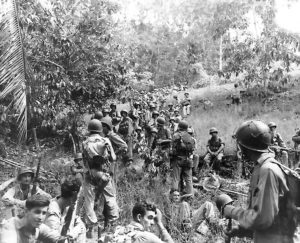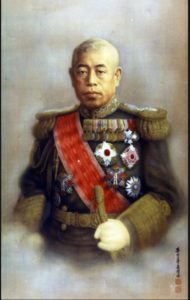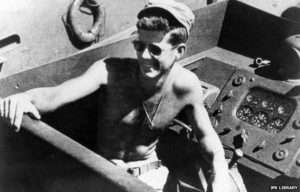- Author
- Editorial Staff
- Subjects
- WWII operations, History - WW2
- Tags
-
- RAN Ships
- None noted.
- Publication
- December 2020 edition of the Naval Historical Review (all rights reserved)
This article forms part of a trilogy covering the history of the Solomon Islands and Bougainville Island. Part 1, discussing the Solomon Islands from European discovery to the Second World War, appeared in the March 2020 edition of this magazine, and Part 3, addressing the history of Bougainville, is to follow.
War in the Pacific
The zenith of the Rising Sun was reached in August 1942 when the Japanese Empire extended from Burma in the west across the Pacific to Alaska’s Aleutian Islands. Stunned by their own success, the Japanese were desperately endeavouring to consolidate their gains. The airfield under construction on Guadalcanal represented the extreme south-eastern outpost of their Empire.
Shortly after the attack on Pearl Harbor eight US ships known as the Pensacola Convoy were sent with reinforcements to Manila, but when the Japanese invaded the Philippines they were re-routed to Australia. This convoy arrived at Brisbane on 23 December 1941 with 2,600 United States Army Air Corps personnel including 48 pilots and 2,000 other troops comprising two Field Artillery Regiments, as well as over 90 aircraft, with armament, munitions and supplies. This was the first major influx of American personnel to arrive on our shores. They were followed by many more and by 1943 over 150,000 Americans were stationed in Australia and a further 45,000 in New Zealand.
In response to the dramatic Japanese thrust through South-East Asia the Allies established the ill-fated Australia, British, Dutch, American (ABDA) command which only lasted a matter of weeks before being subsumed into a new command which in the Pacific was controlled by the Combined Chiefs of Staff based in Washington.
The Pacific Ocean theatre came into being on 30 March 1942 when United States Admiral Chester Nimitz was appointed Supreme Allied Commander Pacific Ocean Areas (POA). This was further divided into the South West Pacific Area (SWPA) commanded by General Douglas MacArthur. The importance of these boundaries to Australia and New Zealand were that Australia, New Guinea, the Netherlands East Indies and the Philippines fell within the SWPA, but our near neighbours New Zealand, New Caledonia, the Solomon Islands, Fiji and Samoa were under the POA.
With a dividing line running through the middle of the Tasman Sea this structure had some important consequences. Principally it meant that American forces based in Australia were under Army command of General MacArthur and those based in New Zealand were under Navy command of Vice Admiral Ghormley. These were vastly different as Army troops were mainly fresh National Guard recruits with limited operational experience, whereas the Navy amphibious forces were largely highly trained Marines. An arbitrary line drawn through the Tasman also meant that Australian and New Zealand forces were, for the first time, in different camps.
Japanese Landings
Following air and sea attacks Japanese forces overwhelmed the local garrison and landed in New Britain on 23 January 1942. Here they established headquarters at Rabaul and quickly strengthened their hold by establishing air and naval bases throughout New Britain, New Ireland and Bougainville. From here they could extend their operations to mainland New Guinea, threatening Australia. Next came the strategically important Solomon Islands, forming an outer ring of a Pacific defensive network, from which they could also interrupt the sea communications between Australia and New Zealand and the United States.
They first moved into the Solomon Islands in March 1942, establishing airstrips throughout the island chain. Tulagi, the political capital of the British Solomon Islands Protectorate, was seized at the beginning of May where a seaplane base was established, and in early June a Korean construction team with a small number of Japanese Marines landed 20 miles distant on Guadalcanal, where a large airfield was soon under construction.
A small RAAF flying boat base with a squadron of four Catalinas had been established at Tanambogo Island adjacent to Tulagi but this was abandoned on 3 May 1942 just before the Japanese invasion. About 50 AIF who were guarding the base boarded a coastal steamer and were taken to safety at Port Vila in the New Hebrides.
The Tide Turns
Defining moments in the Pacific War came only six months after the dramatic attacks on Pearl Harbor and Singapore. These were the great aircraft carrier battles of the Coral Sea 4-8 May 1942 and Midway 4-7 June 1942. The Coral Sea was closely contested but Midway was a resounding victory for the United States as they lost only one carrier against Japanese losses of three carriers, but more importantly Japanese losses of 250 aircraft and invaluable experienced crews which could not be replaced.
Victory allowed the Americans to change from defensive to offensive operations. This was officially known as Operation Watchtower which allowed the United States Army under General MacArthur to take the initiative in the South West Pacific, while the United States Navy and Marines pressed towards Japan. This was planned in three phases: Phase 1 involved the USN seizing control of the Solomons, Phase 2 had MacArthur’s forces land on New Guinea, and under Phase 3 (which did not eventuate) MacArthur’s troops would continue and occupy the Japanese headquarters at Rabaul.
The Expeditionary Force under the operational command of Vice Admiral Fletcher was vast, with three aircraft carriers (USS Saratoga – flag, US Ships Enterprise and Wasp), one battleship (USS North Carolina), six cruisers, 16 destroyers and five fleet oilers. An amphibious force under Rear Admiral Turner comprised 13 troop transports and five cargo ships carrying three regiments of over 19,000 men from the 1st and 2nd Marine Divisions commanded by Major General Vandegrift. Second in Command Amphibious Force and Commander of the Screening Force was Rear Admiral Crutchley RN with an Allied force of eight cruisers (three RAN) and 16 destroyers.
The initial American landings commenced on 7 August 1942. Following a heavy early morning bombardment Marines started pouring ashore and by evening 11,000 were surrounding the Guadalcanal airfield. The Japanese had been taken by surprise and the next day the lightly defended airfield was in American hands and renamed Henderson Field.

At nearby Tulgai another 3,000 Marines met fierce resistance from 1,000 Japanese and after two days of bitter fighting the Americans were cut off from their supplies until they were able to operate aircraft from Henderson Field. More Marines landed unopposed at nearby Florida Island.
On the night of 8/9 August a response came when Vice Admiral Mikawa brought a hastily assembled force of seven cruisers and a destroyer and in a night action sank four of Crutchley’s cruisers, including HMAS Canberra, and damaged a fifth. In return fire only two of Mikawa’s squadron were slightly damaged. Having scored a brilliant success Mikawa, fearing a daytime reprisal from American carriers, failed to take advantage of the amphibious fleet which was completely undefended.
While Admiral Fletcher received praise for his command at both the battles of Coral Sea and Midway his decision to retire early from the Solomons and take his superior carrier force to refuel has been heavily criticised as it left Turner and Crutchley exposed to a Japanese counterattack.
The battle for the Solomons continued as the Japanese were able to resupply and build up forces on Guadalcanal which offered stiff resistance to the Americans, but having suffered heavy losses, and rather than fight to the last man, they successfully withdrew 13,000 troops but had to abandon their heavy equipment. The Japanese suffered enormous losses amounting to 25,000 men, more than a third through disease and starvation. The American losses were less than 2,000 men.
One of the most remarkable instances of the campaign occurred on 18 April 1943 when the much admired Admiral Isoroku Yamamoto flew from his headquarters at Rabaul to undertake a planned inspection of defences in the western Solomons. With the benefit of code breaking the American’s knew of his itinerary and fighters took off from Henderson Field to intercept the Admiral’s aircraft which was shot down over southern Bougainville.Fighting continued in outer islands with the

Japanese putting up fierce resistance until late August 1943; in about one year of operations it was estimated that the combined battles for these largely unknown islands had cost the Allies the loss of over 7,000 men, 29 ships and 615 aircraft, to the Japanese the loss account was 31,000 men, 38 ships and 683 aircraft
The Kiwi Island Home
Initially the newly created Royal New Zealand Navy entered the Solomons campaign by assisting in the escort of American transports and during this phase both light cruisers suffered extensive damage. HMNZS Achilles was bombed by Japanese aircraft with the loss of 13 lives and in another engagement HMNZS Leander was amongst three Allied cruisers torpedoed by enemy ships with the loss of 26 lives. Five RNZN minesweepers were based on Tulagi from January 1943 of which HMNZ Ships Kiwi and Moa sank I-1, one of 20 large Japanese cargo submarines (torpedos removed and only carrying small deck guns) used to ferry men and supplies throughout the Pacific islands.
The first Royal New Zealand Air Force (RNZAF) squadron to engage the Japanese in direct combat was No 3 Squadron (Hudsons) which moved to Henderson Field in November 1942. They were joined in April 1943 by No 15 Squadron (Kittyhawks) who had taken over from a USAAF squadron based in Tonga. By late 1943 the RNZAF element had expanded in Guadalcanal and New Georgia and as the US Forces moved north the New Zealanders took over garrison duties in these islands. They accounted for the downing of over 100 enemy aircraft.
In January 1944, Admiral Halsey (who had replaced Ghormley) as Commander South Pacific, informed the New Zealand Naval Board that ‘the current employment of Japanese submarines and estimates of their future employment indicate immunity from the submarine menace in New Zealand waters’. He proposed that the New Zealand Fairmile motor launches should be employed in the Solomon Islands, relieving American destroyers and patrol vessels for duty elsewhere.
On 7 February 1944 the RNZN’s 12 locally built Type ‘B’ Fairmiles departed from Auckland under escort of the minesweeper HMNZS Scarab, refuelling at Whangaroa, Norfolk Island and New Caledonia before reaching Tulagi. The 80th Flotilla consisted of MLs 401 to 406 and the 81st Flotilla of MLs 407 to 411. The flotillas were located at the seaplane and patrol boat base at Renard Sound in the Russell Islands (50 km northwest of Guadalcanal). During the 17 months of their service in the Solomons, from March 1944 until June 1945, the twelve Fairmiles logged 380,000 miles (610,000 km) escorting merchantmen and on anti-submarine screen patrols but had no encounters with Japanese forces.
Coastwatchers
Other than the Crutchley-led screening force, with the tragic loss of Canberra the RAN had little further involvement in the Solomons with the exception of intelligence gathering activities through its Coastwatcher organisation, the value of which should not be underestimated.
The Coastwatching organisation, mainly established by LCDR Eric Feldt, RAN in 1939, covered northern Australia and extended to New Guinea, the Solomons and New Hebrides. There were at least 12 Coast watching stations in the Solomons, including one operated by a woman, the extraordinary Ruby Boyce. These brave souls provided invaluable intelligence of Japanese air raids from their arrival over Bougainville and passage through the Solomons which allowed US Forces to be airborne and waiting for the enemy. Coastwatchers were there to remain invisible, to watch and listen but one extrovert, District Officer Donald Kennedy, waged war against Japanese with his own small private army outposts. Within the Solomons the Coastwatchers rescued 22 downed US airmen, captured 20 Japanese as POWs and killed 54 of the enemy in protecting their domain.

In October 1942 the first squadron of eight USN patrol boats was based at Tulagi which grew to home-port another two squadrons plus repair facilities, and during the course of the campaign another four squadrons were based at various islands. Lieutenant John F. Kennedy USN and 10 fellow crew members were stranded after their vessel PT 109 was rammed by a Japanese destroyer on 2 August 1943. The explosion was observed by Coastwatcher Arthur Evans on Kolombangara Island who sent two of his Solomon Island Scouts in a dugout to search for survivors. This eventually led to the rescue of the future President. Another USN Lieutenant destined for high office and based on Guadalcanal was Richard M. Nixon who in January 1944 relocated with his logistics detachment to Bougainville.
In an address in 1945 Admiral William (Bull) Halsey speaking of the contribution made by the Coastwatchers said:
‘In the Battle of Guadalcanal, especially the intelligence signalled from Bougainville by Read and Mason, the Coastwatchers saved Guadalcanal, and Guadalcanal saved the Pacific.’
Disposal of Unexploded Ordnance
With consolidation on Guadalcanal American forces rapidly transited through the remainder of the Solomons in their move northwards. Much material was left behind including a vast amount of unexploded ordnance. In August 1951 a joint Australian Army/Navy Bomb Disposal Team left Sydney in HMAS Labuan (ex LST 3501) and on reaching Guadalcanal they were joined by about 20 locals.
Here they found thousands of dangerous explosives ranging from 500 lb bombs, to 6-inch shells, land mines, mortars, grenades and every calibre of small arms ammunition. An enormous ammunition depot remained at Hells Point which was used to stockpile supplies for further operations in the Pacific. During this period and subsequent operations much of this material was destroyed but more continues to be found.
Post War Development
The Second World War stimulated political awareness amongst the islanders and inspired a nationalist movement. Subsequently, in response to a worldwide movement for decolonisation, the islanders set out on a path of constitutional development. The protectorate was formally renamed Solomon Islands in 1975 and independence was attained on 7 July 1978. The new country became an independent republic as part of the Commonwealth with the Queen represented by a Governor-General as head of state.
In 1998 the Solomon Islands became embroiled in ethnic violence with nationalists on Guadalcanal fighting to overthrow a dominant ruling minority. During a period of unrest in June 2000 the government was deposed in a coup, which led to a near collapse of the country’s economy. Later that year Australian and New Zealand forces arrived and a peace accord was signed. During a period of continued tension foreign aid was secured to provide essential services, repair infrastructure and maintain law and order. In 2003 the Pacific Island Forum agreed to a multinational regional assistance program led by Australia with troops deployed to help maintain stability.
In 2007 and again in 2010 the country suffered from severe earthquakes and tsunamis which caused further economic setbacks requiring increased levels of assistance. While it has been a long road in seeking political harmony, in 2017 the multinational mission was able to wind back its involvement with a general election in April 2019 providing a coalition government leading to a framework for progress.
In 2017 Australia and the Solomon Islands Governments signed a security treaty and aid partnership which allows Australian police, defence and associated civilian personnel to deploy rapidly to the Solomons in the event of an emergency. As part of the Pacific Patrol Boat Program a new vessel has been provided to the Solomon Islands, operated by the Solomon Island Police Force with all maintenance, logistic support and training provided by locally based RAN personnel.
Summary
The Solomon Islands rise mysteriously from the vastness of the deep blue Pacific presenting an enticing verdant backdrop to azure skies with cooling winds providing temperate climates to these tropical isles. As enticing as they may appear with many bays and safe anchorages, the native people, deeply suspicious of strangers, have a fierce independent spirit. These characteristics developed from exploitation, firstly by neighbouring islanders, seeking plunder, produce and wives; and secondly to keep away white men seeking to exploit natural resources, save their souls, and recruit labour for far distant plantations. This has led to some unhappy outcomes, many with an Australian connection.
After a brief sojourn at Botany Bay in 1788, the gallant French navigator the Comte de la Pérouse and the complement of his two ships perished here; in 1875 the pious commander of the Australia Squadron, Commodore James Goodenough, was fatally shot with a poisoned arrow, and in 1880 Lieutenant James St Clair Bowen, plus three of his crew from HMS Sandfly, were executed here.
The journey from ancient tribal culture to colonialisation with arbitrary geographical boundaries and imposed changes to culture and lifestyles, and now national independence, has not been easy. Especially, the dramatic changes that have occurred since WWII have led to not unexpected disruptions. It is to be hoped that with mutual respect and understanding the differences between peoples can be reconciled and these enticing islands can be unified as part of an important Pacific community.




